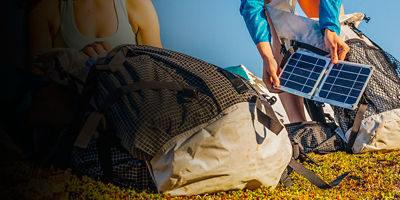
Camping is like a key that opens the door to a whole new world of possibilities. Once you’re comfortable sleeping outdoors, the adventures are endless, from overnight festivals to national park campgrounds to forays deep in the wilderness.
To open that door, you’ll need to equip yourself with a few pieces of essential gear. Don’t be intimidated or confused by all the options. Just think of outdoor sleep systems as scaled-down versions of what you have at home. You’ll need a shelter (like your bedroom), a sleeping pad (think: mattress), and a sleeping bag (your bedding). Of course, these items vary considerably depending on exactly what kind of excursion you’re planning.
Use this guide to build the perfect camping sleep system for your needs, and get ready to walk through that door.
Shelter
Tents
Tents are the most common kind of outdoor shelter. These lightweight, portable homes-away-from-home provide privacy and protect you from wind, rain, and bugs. They work well for everything from car camping to ultralight backpacking, depending on the model and style. If you’re just getting started with camping, a tent is probably your best bet.
When shopping for tents, consider first what kind of camping trips you’ll be doing. Car camping tents tend to be large and sturdy. They’re full of features like pockets, window covers, and multiple doors, but they’re on the heavy and bulky side. Backpacking tents, on the other hand, are lighter and more compact—ideal for trips when every ounce counts. Also think about how many people will be sleeping in it. Tents come in models sized for anywhere from one to six or more people. Smaller tents will be lighter weight and more packable, while bigger tents are nice for social weekends where you don’t have to carry your gear far from the car.
One other major consideration is when you’ll be camping. “Three-season” models, which usually feature lots of mesh panels to enhance airflow, are appropriate for spring through fall, while winter campers will need a more durable “four-season” or winter-specific tent.
Rooftop Tents
These shelters mount on top of your vehicle for an easy, comfy sleeping setup—no tent stakes required. They’re wonderful for everything from overnights to extended road trips, but they cost a lot more than your typical tent.
Bivy sacks
If you’re just starting out, bivy sacks can wait. But if you’re a minimalist camper who would trade elbow room for extremely light weight, they do the trick. These shelters fit closely over a single sleeper and sleeping bag/pad—and they’re not for the claustrophobic. They’re also not great for extended wet or buggy conditions.
Hammocks
Like the hammock you might have in your backyard, camping hammocks are rigged between two trees to create an off-the-ground sleeping system—ideal for terrain where flat ground is hard to find. They’re pretty lightweight, and with the addition of an underquilt, can be warm, protected spaces. However, it takes some practice to get used to sleeping in one, and figuring out how to rig tarps and underquilts can come with a learning curve.
Tarps
A tarp is one of the more minimalist shelter options available. Most are made of coated, waterproof polyester or nylon, and they can be hung to form a tent-like shelter without a bottom (or full sides). Some come with their own poles, while others can be pitched using the trekking poles you may already have. Set up correctly, they provide a surprising amount of protection—but you’ll be more exposed to weather and bugs than you would be in a tent.























